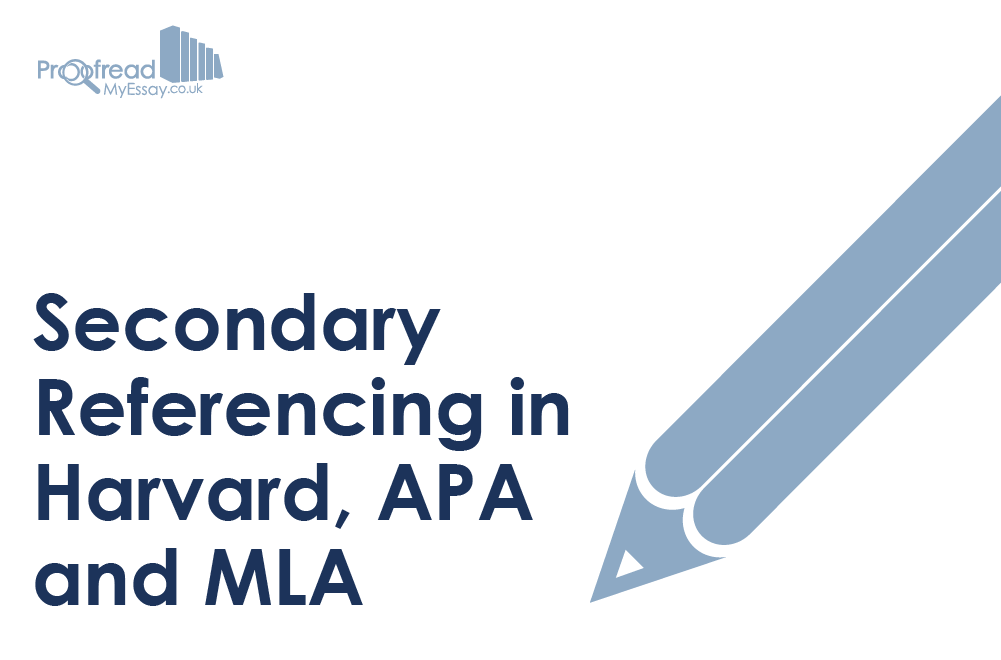Citing your sources clearly is an important skill in academic writing, ensuring your reader can follow your arguments and demonstrating your ability to engage with the existing debate.
However, with so many referencing systems available, each with different conventions for different source types, it’s easy to get confused. Herein we run through the basics of secondary citations for Harvard, APA and MLA referencing, including the differences between the three.
What Is Secondary Referencing?
Secondary referencing is when we cite a source we find cited elsewhere, but without having access to the original text: a ‘second-hand’ citation, so to speak.
Generally, if you come across a reference to an essay or book that seems relevant to your own work, you should try to get hold of the original. This helps because:
- You can check the source has been cited correctly
- You’ll gain a better understanding of the subject matter
However, if you’ve checked the internet and the library and can’t find the original source – perhaps because it’s out of print or only available in another language – you can still cite it using secondary referencing.
In-Text Citations
Harvard, APA and MLA all use parenthetical in-text citations, albeit in slightly different formats for secondary citations.
Harvard citations, as well as the author name and year of publication for the secondary reference, should include the name and date for the source in which you found it mentioned:
According to Jones (1994 cited in Smith, 2006), citing secondary sources is simple.
In the above, ‘Jones, 1994’ is the secondary reference (i.e. the inaccessible text) and ‘Smith, 2006’ is the text in which we’ve found it cited. Using ‘cited in’ makes this clear.
Find this useful?
Subscribe to our newsletter and get writing tips from our editors straight to your inbox.
APA citations differ slightly by not including the year of publication for the secondary reference. They also use the phrase ‘as cited in’ rather than just ‘cited in’:
According to Jones (as cited in Smith, 2006), citing secondary sources is simple.
MLA is more distinct, as it does not include a year of publication in citations. Instead, for secondary citations, you should use ‘qtd. in’ (i.e. ‘quoted in’), followed by the name of the author and the page number of the quoted/paraphrased section:
According to Jones (qtd. in Smith 75), citing secondary sources is simple.
Reference Lists
One common mistake made when using secondary references is including both texts in the reference list.
However, your reference list should only ever include texts you have accessed directly (either online or in print). This means you only need to include the book/article you’ve read in your reference list, not the the secondary reference.
In the examples above, for instance, the reference list would list the Smith text, but not the Jones one. This applies for Harvard, APA and MLA referencing.
